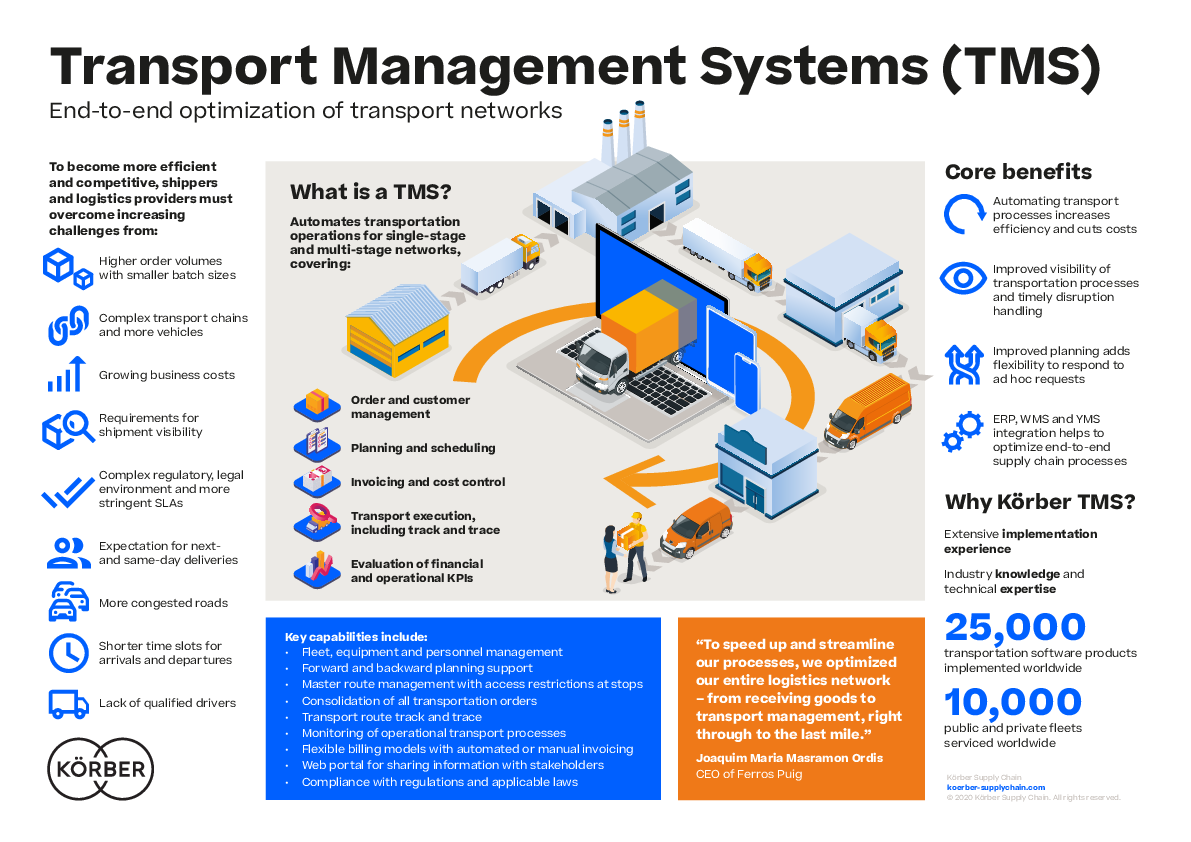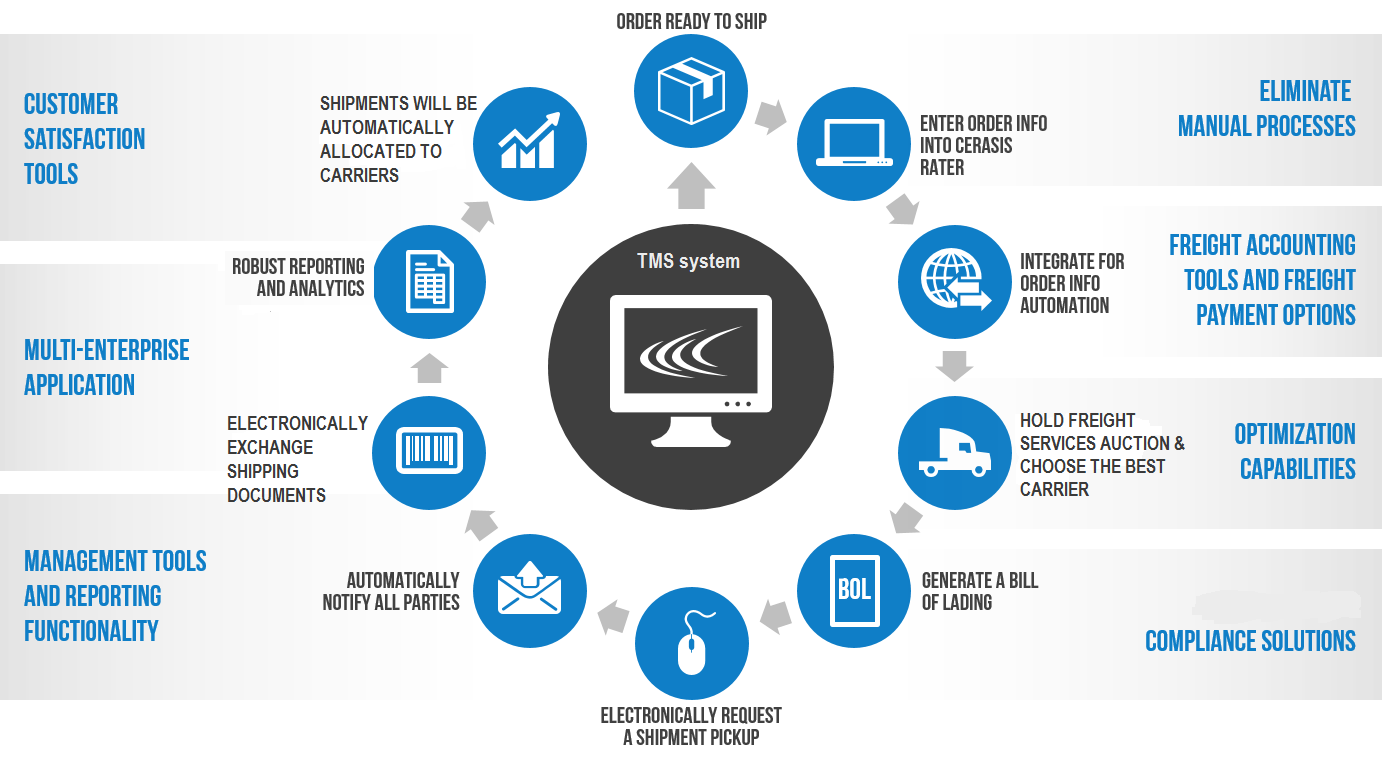Transportation Management Systems (TMS): The Ultimate Guide
In today’s fast-paced logistics world, Transportation Management Systems (TMS) play a vital role in optimizing supply chain operations. Whether you’re managing a fleet, coordinating shipments, or handling multi-modal transport, a TMS is indispensable for efficiency, cost reduction, and customer satisfaction.

What Is a Transportation Management System (TMS)?
A Transportation Management System is a digital tool designed to manage, optimize, and streamline the logistics and transportation processes within a supply chain. It helps businesses plan routes, book freight, track shipments, and ensure compliance with regulations.
Key Features of TMS Include:
– Route Optimization: Finding the most efficient paths to reduce costs and delivery times.
– Real-Time Tracking: Monitoring shipments in real time for transparency.
– Freight Management: Automating carrier selection and rate negotiations.
– Analytics and Reporting: Gaining insights into operational performance to improve decision-making.
Did You Know?
The global TMS market is projected to grow at a CAGR of 19% from 2023 to 2030, driven by e-commerce and globalization.
Why Is TMS Important for Businesses?
Implementing a TMS offers a competitive edge by addressing key logistics challenges.
Benefits of a Transportation Management System
- Cost Savings
By automating processes like carrier selection and freight auditing, TMS significantly reduces transportation expenses. -
Improved Efficiency
Automating repetitive tasks frees up staff for strategic activities, ensuring resources are used effectively. -
Enhanced Customer Satisfaction
Real-time updates and reliable delivery schedules improve the end-user experience. -
Regulatory Compliance
TMS ensures that shipments meet legal and environmental standards, reducing the risk of fines.
Real-Life Applications of TMS
- Retail Giants: Companies like Walmart and Amazon use TMS to handle high shipment volumes seamlessly.
- Manufacturers: TMS aids manufacturers in synchronizing production with delivery schedules.

Components of an Effective TMS
Core Functionalities
A robust TMS integrates these essential components:
- Carrier Management: Evaluate and select the most cost-effective carriers.
- Shipment Planning and Execution: Plan shipments by mode, size, and priority.
- Billing and Payment: Automate invoicing and payment processes to minimize errors.
- Returns Management: Handle reverse logistics with ease.
Advanced Features
Modern TMS solutions offer advanced capabilities like:
– Artificial Intelligence: Predictive analytics for forecasting and decision-making.
– Cloud Integration: Scalability and accessibility for global operations.
– Internet of Things (IoT): Enhanced tracking through IoT-enabled devices.
Top TMS Software in 2024
- Oracle Transportation Management (OTM)
Known for its scalability and integration capabilities. -
SAP Transportation Management
Offers comprehensive functionality for businesses of all sizes. -
Blue Yonder
Renowned for its predictive analytics and user-friendly interface.
Explore more about top software on trusted platforms like Gartner.
How to Choose the Right TMS for Your Business
Selecting the best TMS depends on your organization’s needs and goals.
Factors to Consider:
- Scalability: Will the TMS grow with your business?
- Customization: Does it allow for tailored workflows?
- Integration: Can it seamlessly connect with your ERP and WMS systems?
- User Experience: Is the interface intuitive for all stakeholders?

Implementation Best Practices
- Define Clear Objectives
Understand your logistics pain points and desired outcomes. -
Involve Stakeholders
Collaborate with teams across departments for smoother implementation. -
Train Your Team
Conduct workshops to familiarize employees with the new system. -
Leverage Analytics
Use the data provided by TMS to continuously improve processes.
Common Challenges and How to Overcome Them
1. Resistance to Change
Employees may be hesitant to adopt new technology. Address this by emphasizing the benefits and providing training.
2. Integration Issues
Ensure compatibility with existing software to avoid disruptions.
3. High Initial Costs
Start with a cloud-based TMS to minimize upfront investments.

FAQs about Transportation Management Systems
What industries benefit most from TMS?
TMS is widely used in retail, manufacturing, e-commerce, and third-party logistics (3PL) industries.
Can small businesses afford a TMS?
Absolutely. Many TMS solutions are scalable and offer pricing models suitable for small businesses.
Is a TMS only for large fleets?
No. A TMS is equally valuable for managing small fleets or single-mode transportation.
Conclusion
In the era of digital transformation, a Transportation Management System (TMS) is no longer a luxury but a necessity for businesses seeking to stay competitive. By streamlining logistics, enhancing customer satisfaction, and reducing costs, TMS solutions empower organizations to excel in their supply chain operations.
Whether you’re a small business or a global enterprise, investing in the right TMS can revolutionize your transportation strategy.
Explore further insights about logistics and technology on our blog or get started with the best TMS tools today!

